Toshiba Information Systems CC4-E01 Mobile Phone with UMTS/GSM/DCS/PCS & Bluetooth User Manual 1 of 3
Toshiba Information Systems (UK) Ltd, Mobile Communications Division Mobile Phone with UMTS/GSM/DCS/PCS & Bluetooth Users Manual 1 of 3
Contents
- 1. Users Manual 2 of 3
- 2. Users Manual 3 of 3
- 3. Users Manual 1 of 3
Users Manual 1 of 3
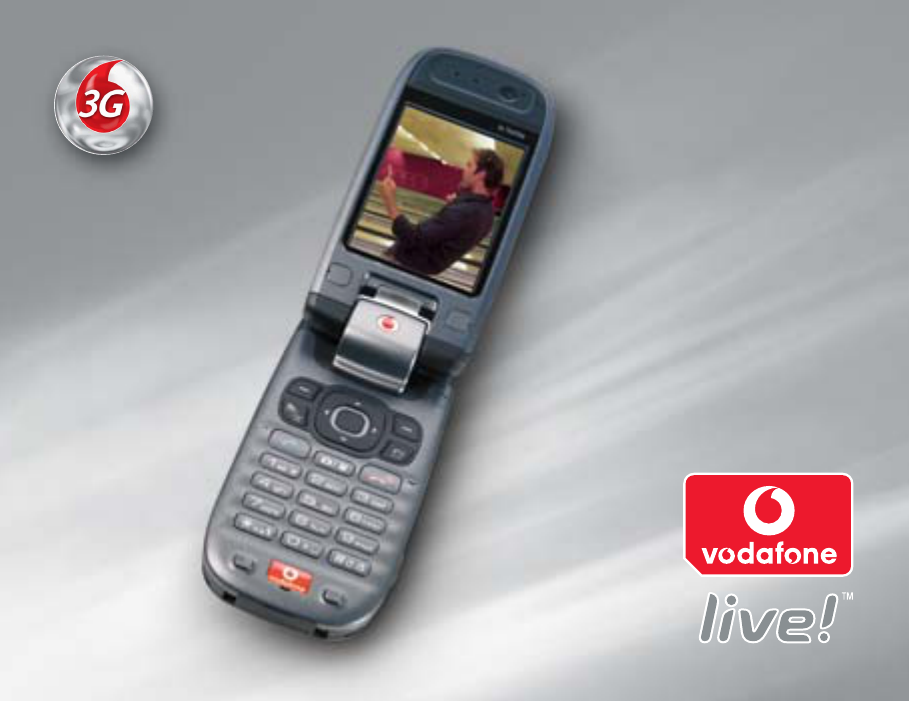
CMY K
PANTONE
485
PANTONE
877 TS921_UG_UK_blk
Customised for
Toshiba TS 921
User guide
Toshiba TS 921 User guide
PX1C0007K1AA

1
Introduction
Congratulations on choosing the TS 921, which is customised
for Vodafone live!
We hope that you will be pleased with this new wireless phone
incorporating 3G technology, also known as UMTS. This phone
provides advanced entertainment features including video telephony,
video messaging and high-speed access to Vodafone live!
The TS 921 has a sophisticated design, high-quality 260,000 colour
display and 1.92 mega pixel camera. Furthermore, you can rotate the
colour display to suit your needs.
Copyright©2005 TOSHIBA CORPORATION, All rights reserved.
Network services
To use the phone you must have service from a wireless service
provider. Many of the features in this device depend on features in the
wireless network to function. These Network Services may not be
available on all networks or you may have to make specific
arrangements with your service provider before you can utilize
Network Services. Your service provider may need to give you
additional instructions for their use and explain what charges will
apply. Some networks may have limitations that affect how you can
use Network Services. For instance, some networks may not support
all language dependent characters and services.
This wireless device is a 3GPP GSM Release 99 terminal supporting
GPRS service, and is designed to support also Release 97 GPRS
networks. However, there may be some compatibility issues when
used in some Release 97 GPRS networks. For more information,
contact your service provider.

2
TOSHIBA CORPORATION
IMPORTANT NOTE: PLEASE READ BEFORE USING
YOUR MOBILE PHONE
BY ATTEMPTING TO USE ANY SOFTWARE ON THE SUPPLIED
PHONE THIS CONSTITUTES YOUR ACCEPTANCE OF THESE EULA
TERMS. IF YOU REJECT OR DO NOT AGREE WITH ALL THE
TERMS OF THIS EULA, PLEASE DO NOT ATTEMPT TO ACCESS
OR USE THE SUPPLIED SOFTWARE.
End User License Agreement
This End User License Agreement (“EULA”) is a legal agreement
between you (as the user) and TOSHIBA CORPORATION (“Toshiba”)
with regard to the copyrighted software as installed in a Toshiba 3G
mobile phone supplied to you (the “Phone”).
Use or disposal of any software installed in the Phone and related
documentations (the “Software”) will constitute your acceptance of
these terms, unless separate terms are provided by the Software
supplier on the Phone, in which case certain additional or different
terms may apply. If you do not agree with the terms of this EULA, do
not use or dispose the Software.
1. License Grant. Toshiba grants to you a personal, non-
transferable and non-exclusive right to use the Software as set
out in this EULA. Modifying, adapting, translating, renting,
copying, making available, transferring or assigning all or part
of the Software, or any rights granted hereunder, to any other
persons and removing any proprietary notices, labels or marks
from the Software is strictly prohibited, except as expressly
permitted in this EULA. Furthermore, you hereby agree not to
create derivative works based on the Software.
2. Copyright. The Software is licensed, not sold. You acknowledge
that no title to the intellectual property in the Software is or will
be transferred to you. You further acknowledge that title and full
ownership rights to the Software will remain the exclusive
property of Toshiba, Toshiba’s affiliates, and/or their suppliers,
and you will not acquire any rights to the Software, except as
expressly set out in this EULA. You may keep a back-up copy of
the Software only so far as necessary for its lawful use. All
copies of the Software must contain the same proprietary
notices as contained in or on the Software and are subject to
the terms of this EULA. All rights not expressly granted under
this EULA are reserved to Toshiba, Toshiba’s affiliates and/or
their suppliers.
3. Reverse Engineering. You agree that you will not attempt, and if
you are a business organisation, you will use your best efforts
to prevent your employees, servants and contractors from
attempting to reverse engineer, decompile, modify, translate or
disassemble the Software in whole or in part except to the
extent that such actions cannot be excluded by mandatory
applicable law and only if those actions are taken in
accordance with such applicable law. Any failure to comply with
the above or any other terms and conditions contained herein
will result in the automatic termination of this license and the
reversion of the rights granted hereunder to Toshiba.
4. LIMITED WARRANTY. Only during the warranty period for the
Phone, Toshiba, Toshiba’s affiliate, its suppliers or its
authorized service company will repair or replace, at Toshiba’s
sole discretion, defective Software unless such defect results
from acts or phenomenon beyond the reasonable control of

3
Toshiba. EXCEPT AS PROVIDED IN THIS EULA: (A) TOSHIBA,
TOSHIBA’S AFFILIATES, AND THEIR SUPPLIERS DISCLAIM
ALL WARRANTIES, CONDITIONS OR OTHER TERMS
(WHETHER EXPRESS OR IMPLIED), INCLUDING BUT NOT
LIMITED TO WARRANTIES, CONDITIONS AND TERMS OF
SATISFACTORY QUALITY, MERCHANTABILITY, FITNESS
FOR A PARTICULAR PURPOSE AND NON-INFRINGEMENT
OF THIRD-PARTY RIGHTS; AND (B) THE ENTIRE RISK AS
TO THE QUALITY AND PERFORMANCE OF THE SOFTWARE
IS WITH YOU. YOU ACCEPT THAT SOFTWARE MAY NOT
MEET YOUR REQUIREMENTS AND NO WARRANTY CAN BE
GIVEN THAT OPERATION OF THE SOFTWARE WILL BE
UNINTERRUPTED OR ERROR-FREE.
5. LIMITATION OF LIABILITY. TO THE FULLEST EXTENT
LEGALLY PERMITTED, IN NO EVENT SHALL TOSHIBA,
TOSHIBA’S AFFILIATES OR THEIR SUPPLIERS BE LIABLE
TO YOU FOR ANY DAMAGES FOR (A) LOST BUSINESS OR
REVENUE, BUSINESS INTERRUPTION, LOSS OF BUSINESS
DATA; OR (B) CONSEQUENTIAL, SPECIAL, INCIDENTAL OR
INDIRECT DAMAGES OF ANY KIND (WHETHER UNDER
CONTRACT, TORT OR OTHERWISE) ARISING OUT OF: (I)
THE USE OR INABILITY TO USE THE SOFTWARE, EVEN IF
TOSHIBA, TOSHIBA’S AFFILIATES OR THEIR SUPPLIER
HAS BEEN ADVISED OF THE POSSIBILITY OF SUCH
DAMAGES; OR (II) ANY CLAIM BY A THIRD PARTY. SAVE
AS SET OUT IN THIS SECTION, TOSHIBA’S ENTIRE
LIABILITY UNDER THIS EULA SHALL NOT EXCEED THE
PRICE PAID FOR THE SOFTWARE, IF ANY.
THE ABOVE DISCLAIMER AND LIMITATION DOES NOT
EXCLUDE OR LIMIT (A) LIABILITY FOR DEATH OR PERSONAL
INJURY CAUSED BY NEGLIGENCE OR (B) ANY MANDATORY
LEGAL RIGHT OR LIABILITY TO THE EXTENT THAT IT CANNOT
BE LAWFULLY EXCLUDED OR LIMITED UNDER APPLICABLE
LAW.
PLEASE MAKE AND RETAIN A COPY OF ALL DATA YOU HAVE
INSERTED INTO YOUR PRODUCT, FOR EXAMPLE NAMES,
ADDRESSES, PHONE NUMBERS, PICTURES, RINGTONES ETC,
BEFORE SUBMITTING YOUR PRODUCT FOR A WARRANTY
SERVICE, AS SUCH DATA MAY BE DELETED OR ERASED AS
PART OF THE REPAIR OR SERVICE PROCESS.
6. Laws. This EULA will be governed by the laws of England and
Wales. All disputes arising out of this EULA shall be subject to
the exclusive jurisdiction of the English Court.
7. Export Laws. Any use, duplication or disposal of the Software
involves products and/or technical data that may be controlled
under the export laws of applicable countries or region and may
be subject to the approval of the applicable governmental
authorities prior to export. Any export, directly or indirectly, in
contravention of the export laws of applicable countries or
region is prohibited.
8. Third Party Beneficiary. You agree that certain suppliers of the
Software to Toshiba have a right as a third party beneficiary to
enforce the terms of this EULA against you as a user.
9. Transfers. The Software may be transferred only as installed on
the Phone to a lawful third party user, where that party accepts
the terms of this EULA which will continue to apply.
4
10. IF YOU ARE DEALING AS A CONSUMER IN THE UK & THE
SOFTWARE QUALIFIES AS ‘GOODS’ YOUR STATUTORY RIGHTS
UNDER APPLICABLE LAW ARE NOT AFFECTED.
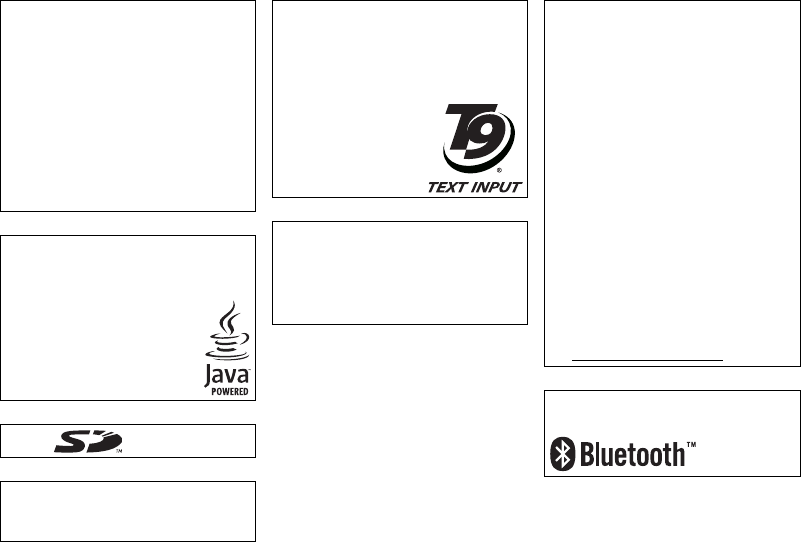
5
Licensed by QUALCOMM Incorporated under
one or more the following United States
Patents and/or their counterparts in other
nations :
4,901,307 5,504,773 5,109,390 5,535,239
5,267,262 5,600,754 5,416,797 5,778,338
5,490,165 5,101,501 5,511,073 5,267,261
5,568,483 5,414,796 5,659,569 5,056,109
5,506,865 5,228,054 5,544,196 5,337,338
5,657,420 5,710,784
Java™ and all Java-based marks are
trademarks or registered trademarks of Sun
Microsystems, Inc.
SD Logo is a trademark.
MPEG Layer-3 audio coding technology
licensed from Fraunhofer IIS and Thomson
multimedia.
T9 Text Input is covered by Euro.Pat. Nos. 0
842 463 (96927260.8), 1 010 057
(98903671.0), 1 018 069 (98950708.2), DK,
DE, FI, FR, IE, IT, NL, PT, ES, SE, GB and other
patents pending.
Powered by Mascot Capsule® /
Micro3D Edition™ Mascot Capsule® is a
registered trademark of HI Corporation
© 2002-2003 HI Corporation. All Rights
Reserved.
THIS PRODUCT IS LICENSED UNDER THE
MPEG-4 VISUAL PATENT PORTFOLIO LICENSE
FOR THE PERSONAL AND NON-COMMERCIAL
USE OF A CONSUMER FOR (i) ENCODING
VIDEO IN COMPLIANCE WITH THE MPEG-4
VISUAL STANDARD (“MPEG-4 VIDEO”) AND/OR
(ii) DECODING MPEG-4 VIDEO THAT WAS
ENCODED BY A CONSUMER ENGAGED IN A
PERSONAL AND NON-COMMERCIAL ACTIVITY
AND/OR WAS OBTAINED FROM A VIDEO
PROVIDER LICENSED BY MPEG-LA TO
PROVIDE MPEG-4 VIDEO. NO LICENSE IS
GRANTED OR SHALL BE IMPLIED FOR ANY
OTHER USE. ADDITIONAL INFORMATION
INCLUDING THAT RELATING TO
PROMOTIONAL, INTERNAL AND COMMERCIAL
USES AND LICENSING MAY BE OBTAINED
FROM MPEG LA, LLC.
SEE HTTP://WWW.MPEGLA.COM.
Bluetooth™ is a trademark of Bluetooth SIG,
Inc.USA.

6
Copyright © 1998-2003 The OpenSSL Project. All rights reserved.
Copyright © 1995-1998 Eric Young (eay@cryptsoft.com) All rights reserved.
THIS SOFTWARE IS PROVIDED BY THE OpenSSL PROJECT AND/OR BY ERIC YOUNG “AS IS” AND
ANY EXPRESSED OR IMPLIED WARRANTIES, INCLUDING, BUT NOT LIMITED TO, THE IMPLIED
WARRANTIES OF MERCHANTABILITY AND FITNESS FOR A PARTICULAR PURPOSE ARE
DISCLAIMED. IN NO EVENT SHALL THE OpenSSL PROJECT, ERIC YOUNG OR ITS CONTRIBUTORS
BE LIABLE FOR ANY DIRECT, INDIRECT, INCIDENTAL, SPECIAL, EXEMPLARY, OR CONSEQUENTIAL
DAMAGES (INCLUDING, BUT NOT LIMITED TO, PROCUREMENT OF SUBSTITUTE GOODS OR
SERVICES; LOSS OF USE, DATA, OR PROFITS; OR BUSINESS INTERRUPTION) HOWEVER CAUSED
AND ON ANY THEORY OF LIABILITY, WHETHER IN CONTRACT, STRICT LIABILITY, OR TORT
(INCLUDING NEGLIGENCE OR OTHERWISE) ARISING IN ANY WAY OUT OF THE USE OF THIS
SOFTWARE, EVEN IF ADVISED OF THE POSSIBILITY OF SUCH DAMAGE.
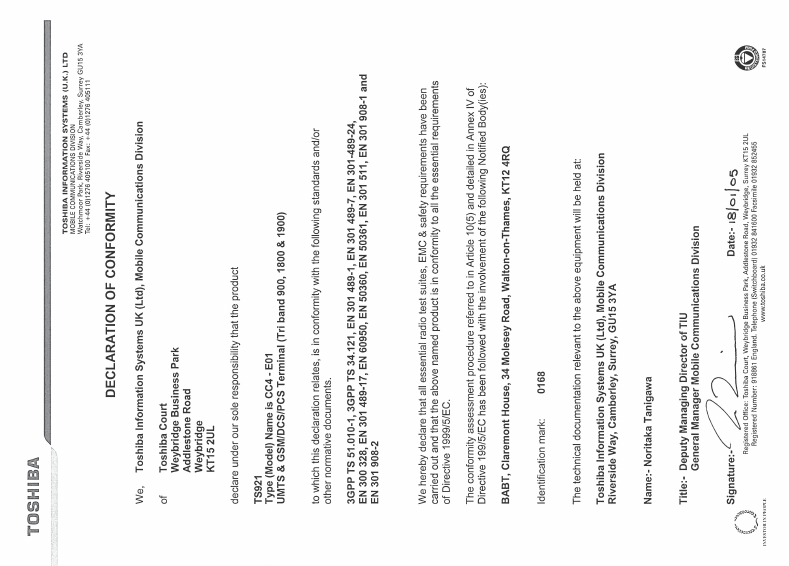
7

8
Safety Instructions
Care and Maintenance
If you maintain your phone in good condition, the quality of your
phone usage as well as the phone life span will be greatly enhanced.
If you follow the suggestions below, this will also help you to fulfil
warranty obligations.
• Keep the phone and all the parts and accessories out of the reach
of small children.
• Keep the phone dry as moisture of any kind can contain minerals
that will corrode the electronic circuits.
• Do not use or store the phone in dusty or dirty locations as the
moving parts of the phone can be damaged.
• Do not use or store the phone in hot areas. High temperatures will
shorten the life span of the phone, damage the battery or warp/
melt the plastic used in the phone’s manufacture.
• Do not store the phone in cold areas. When there is a difference in
temperature between the room and the phone, condensation can
form inside the phone, causing damage to the electronic circuits.
• Do not open the phone unless absolutely necessary, for example,
to install the battery or SIM card. We recommend that you go to
your dealer when problems arise with either of these items and
allow their experts to handle the phone instead.
• Do not mishandle or abuse the phone. Dropping it, knocking or
shaking it can damage the internal circuits.
• Do not use harsh chemicals, strong detergents, or cleaning
solvents to clean the phone. If you must clean it, then use a soft
cloth that has been slightly dampened with a mild soap and water
solution.
• Do not apply paint or other such substances to the phone. This
could clog the phone’s moving parts.
• If the phone or any of the accessories are not working as they
should, please consult your dealer who can provide you with the
expert assistance that you require.
• Interference may affect your phone’s performance. This is
perfectly normal and once you move away from the source of the
interference, the phone should operate as usual.
FCC Statement
This device complies with Part 15 of the FCC rules. Operation is
subject to the following two conditions: (1) This device may not cause
harmful interference, and (2) This device must accept any
interference received, including interference that may cause
undesired operation.
9
Information to User
This equipment has been tested and found to comply with the limits
of a Class B digital device, pursuant to Part 15 of the FCC Rules.
These limits are designed to provide reasonable protection against
harmful interference in a residential installation. This equipment
generates, uses and can radiate radio frequency energy and, if not
installed and used in accordance with the instructions, may cause
harmful interference to radio communications.
However, there is no guarantee that interference will not occur in a
particular installation; if this equipment does cause harmful
interference to radio or television reception, which can be determined
by turning the equipment off and on, the user is encouraged to try to
correct the interference by one or more of the following measures:
1. Reorient/relocate the receiving aerial.
2. Increase the separation between the equipment and receiver.
3. Connect the equipment into an outlet on a circuit different from
that to which the receiver is connected.
4. Consult the dealer or an experienced radio/TV technician for help.
Caution: Changes or modifications not expressly approved by the
manufacturer responsible for compliance could void the user's
authority to operate the equipment.

10
Contents
Introduction.......................................1
Safety Instructions .............................8
Contents .........................................10
What’s in the Box.............................12
1 Basic Operations ..........................13
Parts & Functions ............................14
SIM Card.........................................25
Emergency Calls..............................27
Battery Pack....................................28
Memory Card ..................................30
Turning On/Off the Power.................31
System Mode Setting.......................32
Language Setting.............................33
Date & Time Settings .......................34
Accessing Functions ........................37
Making a Call ..................................39
Answering a Call..............................40
Operations during Calls....................41
Call Log ..........................................43
Optional Services.............................47
Character Input................................58
Contacts List ...................................63
2 Video Telephony............................83
About Video Calls.............................84
Making a Video Call .........................85
Answering a Video Call.....................86
Convenient Functions for Video Calls.87
Video Call Settings...........................91
3 Camera/Video Camera .................97
Camera...........................................98
Pictures.........................................102
Videos...........................................116
Picture & Video Settings.................120
4 Messaging ..................................131
Messaging Capabilities ..................132
MMS.............................................133
SMS..............................................144
MMS/SMS Common Operations .....150
Email ............................................157
Postcard........................................165
live! Studio ....................................169
5 Vodafone live! .............................171
Accessing Vodafone live!................172
Bookmarks ....................................175
Operations for Web Pages..............177
Browser Settings............................180
Games & More ..............................181
Media Player .................................187
6 My Items .....................................195
My Items .......................................196
Using Files & Folders......................198
Displaying Files on a TV..................201
Using vObjects...............................203
Using the Memory Card..................206
Using the SIM Card ........................208
11
7 Settings.......................................213
Display Settings.............................214
Phone Profiles ...............................222
Language Setting...........................230
Shortcut Menu...............................231
Shortcut Keys ................................232
External Light Settings ...................234
Flight Mode Setting........................236
Call Settings..................................237
Using the Stereo Handsfree
Headset ........................................241
Security Settings............................243
Network & Internet.........................254
8 Convenient Functions.................261
SIM Tool Kit ...................................262
Calendar .......................................263
Alarms ..........................................267
Calculator......................................269
Converter ......................................270
Voice Recorder ..............................271
Countdown Timer ..........................273
Notepad ........................................274
World Clock...................................275
Multi Task .....................................276
Barcode ........................................278
Torch ............................................281
9 File Transfer & Synchronisation.283
File Transfer ..................................284
File Synchronisation .......................300
10 Appendix...................................305
Troubleshooting ...........................306
Specifications & Accessories ........308
EU Warranty................................309
Index ..........................................310
Glossary......................................314
Health and Safety Information.......316
Menu Structure ...........................320
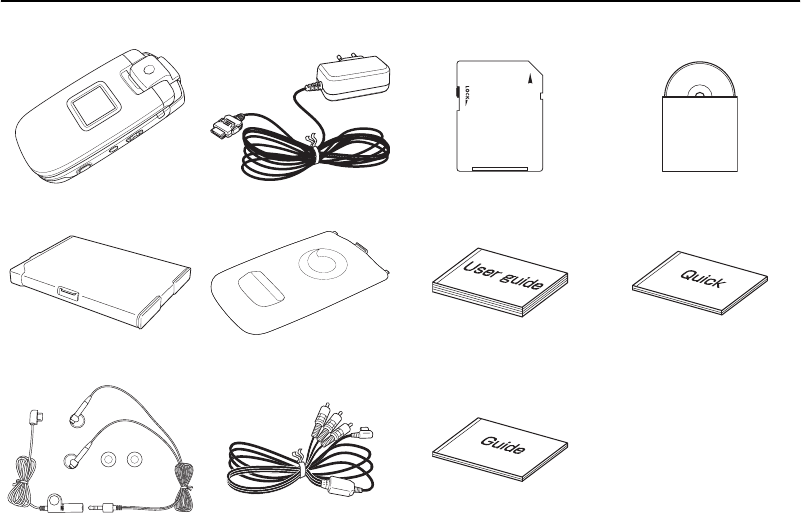
12
What’s in the Box
Your box contains the following items:
Phone AC Adapter SD Memory Card (32MB) CD-ROM
Battery Pack Battery Cover User Guide Quick Start Guide
Stereo Handsfree Headset Video Cable for TV Connection 3G Guide

Basic Operations
This chapter explains the basic operations and functions of your phone.
In This Chapter
❍Parts & Functions ❍Accessing Functions
❍SIM Card ❍Making a Call
❍Emergency Calls ❍Answering a Call
❍Battery Pack ❍Operations during Calls
❍Memory Card ❍Call Log
❍Turning On/Off the Power ❍Optional Services
❍System Mode Setting ❍Character Input
❍Language Setting ❍Contacts List
❍Date & Time Settings
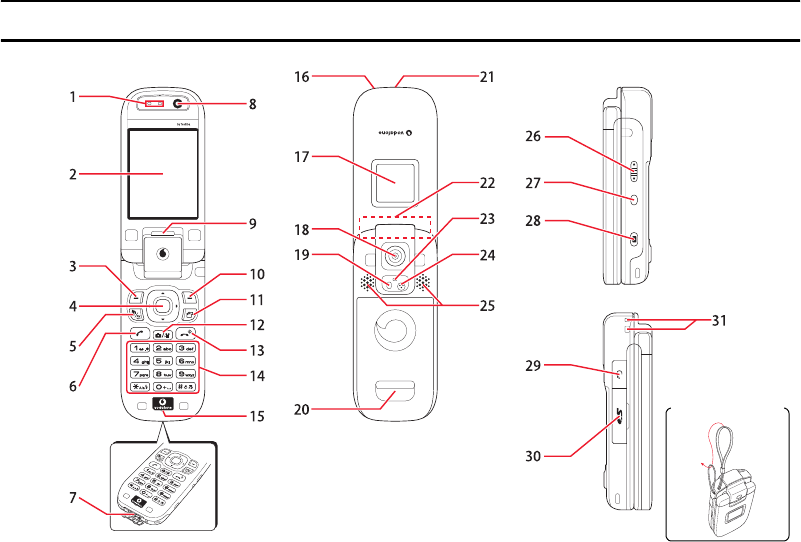
14
Basic Operations
Parts & Functions
Phone
Attaching the Strap
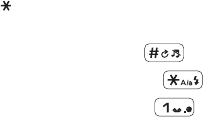
Basic Operations
15
1: Earpiece
2: Main Display: The main display is the screen facing you when
your phone is opened.
3: Left Soft Key: Performs the operation indicated for the button
on the main display.
4: Navigation Key/Centre Key: Moves the cursor up, down, left
or right, confirms operations and accesses shortcuts (page
233). The centre key is also used to perform other major
operations in screens, acts as the shutter button, etc.
5: VT Key: Accesses the video call function.
6: Send Key: Makes and answers calls.
7: Cable and Phone Charging Connections
8: Internal Camera Lens: Used during video calls.
9: External Light: Flashes for incoming calls, messages and
other information, as well as when you have unchecked
information.
10: Right Soft Key: Performs the operation indicated for the
button on the main display.
11: AP Key: Accesses Multi Task.
12: Camera/Video Key: Activates the camera/video camera.
13: End/Power Key: Turns on/off the power and ends calls/
operations and takes you back to standby mode.
14: Keypad/ Key/# Key: Allows you to enter phone numbers,
characters, etc. To switch Phone Profiles (page 222) between
Normal and Silent, press and hold . To set/cancel the
key guard (page 252), press and hold . To listen to your
voicemail (page 48), press and hold .
15: Microphone: Used for voice calls.
16: Charging Indicator
17: External Display: Indicates incoming calls, received
messages, etc. while your phone is closed.
18: External Camera Lens: Used for taking pictures and
recording videos.
19: Mobile Light
20: Camera Grip
21: Infrared Port
22: Antenna (Built-in)
23: Camera/Video Indicator
24: Second Microphone: Records sound for videos.

16
Basic Operations
25: Stereo Speakers
26: Side Key ( , ): Adjusts the volume, selects options,
changes the zoom, etc. The function of the key varies
depending on the mode.
27: Side Key ( ): Takes you back to the previous operation, etc.
You can also assign a shortcut to the key (page 232).
28: Side Key ( ): Activates the camera, etc. Acts as the shutter
button for the camera.
29: AV OUT/Earphone Microphone Jack
30: Memory Card Slot
31: Handstrap Hole
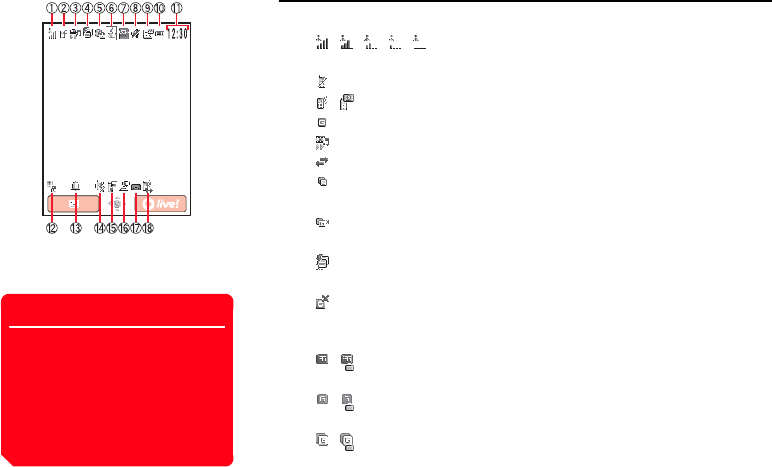
Basic Operations
17
Main Display
The following indicators appear on the main display.
1: / / / / (Signal Strength, Out of Range): Indicates the signal
strength is at one of five levels.
(Flight Mode On): Indicates Flight mode (page 236) is set to On.
2: / (Voice/Video Call): Indicates a voice or video call in progress.
(Dial-up Connection): Indicates a dial-up connection.
3: (Streaming Playback): Indicates streaming playback.
(Sending/Receiving Data): Indicates data is being sent or received.
(Identifying GPRS Network Location Information): Indicates you can
establish a connection on the GPRS network.
(GPRS Data Connection Established): Indicates you can perform data
communication on the GPRS network.
4: (Multi Task): Indicates the maximum number of functions activated in Multi
Task.
(Limited Service): Indicates you are out of the service area of the service
provider with which you have concluded a contract. When this indicator is
displayed, only emergency services can be called.
/ (3G Network Connection/Roaming): Indicates a 3G network
connection or roaming.
/ (GSM Network Connection/Roaming): Indicates a GSM network
connection or roaming.
/ (GPRS Network Connection/Roaming): Indicates a GPRS network
connection or roaming.
Tip
• The screens appearing in this
manual are simplified for the
purpose of explanation and may
differ from the actual screens
appearing on your phone.
•
Screens have been omitted from the
explanation of some operations.

18
Basic Operations
5: (Web SSL): Indicates a connection to a Web page with security protection.
(External Device Synchronisation): Indicates data is being synchronised
with an external device.
/ (Bluetooth™ Connection Established/Connection Standby):
Indicates a connection to an external device via Bluetooth™.
(Infrared Communication): Indicates a connection to an external device via
infrared.
6: / (Java™ Application): Indicates a running/paused Java™ application
(page 184).
7: / (Memory Card Inserted/Write Protected): Indicates the status of the
memory card (page 30).
8: (Playing Media File): Indicates a media file is being played.
/ / (Silent/Car/Meeting): Indicates the profile set for Phone Profiles
(page 222).
9: / (MMS/SMS Priority Level): Indicates the reception of a message with a
high priority level.
(Rights Object): Indicates the reception of a rights object (page 138).
/ (New or Unread MMS/SMS): Indicates a new or unread MMS message
(page 138) or SMS message (page 147).
(WAP): Indicates a new or unread WAP Push message (page 148).
10: / / / / (Battery Level): Indicates the battery level is at one of five
levels.
(Charging)

Basic Operations
19
11: Clock Display Indicator (Clock Display): Appears when your phone is not in
standby mode.
12: / (Key Guard/Phone Lock): Indicates the key guard (page 252) or phone
lock (page 249) is set.
13: (Alarm): Indicates the alarm (page 267) is set.
14: / / (Silent/Vibration): Indicates both Silent and Vibration are set or
either Silent or Vibration is set (page 225).
15: (Information Prompt): Indicates a missed call, unread message, etc.
16: (Message Received): Indicates a recorded message at the Voicemail Centre
(page 47).
(Missed Call): Indicates a missed call.
17: (SMS and MMS Inbox Full): Indicates the SMS (page 147) and MMS (page
138) Inbox is full.
18: / / (Call Diverting without Ringing Set for Voice Call/Video Call/
Voice and Video Calls): Indicates call diverting without ringing is set for both
voice calls and video calls or either voice calls or video calls.
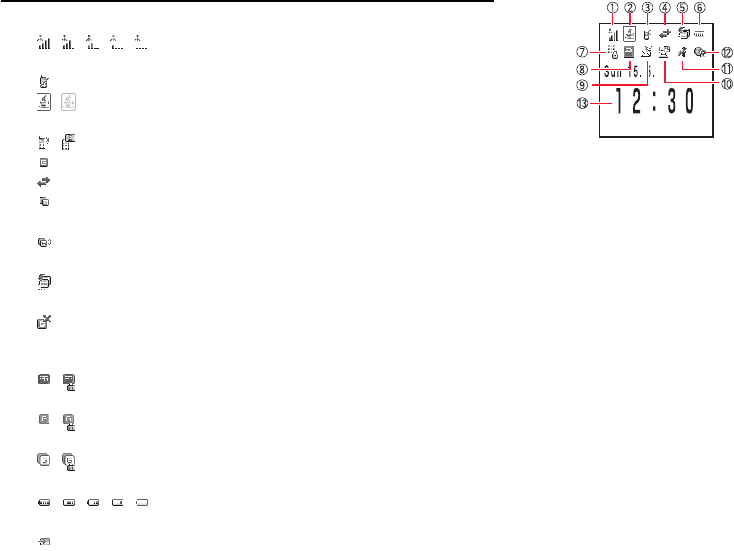
20
Basic Operations
External Display
The external display allows you to confirm information when your phone is closed.
1: / / / / (Signal Strength, Out of Range): Indicates the signal
strength is at one of five levels.
(Flight Mode On): Indicates Flight mode (page 236) is set to On.
2: / (Java™ Application): Indicates a running/paused JavaTM application
(page 184).
3: / (Voice/Video Call): Indicates a voice or video call in progress.
(Dial-up Connection): Indicates a dial-up connection.
4: (Sending/Receiving Data): Indicates data is being sent or received.
(Identifying GPRS Network Location Information): Indicates you can
establish a connection on the GPRS network.
(GPRS Data Connection Established): Indicates you can perform data
communication on the GPRS network.
5: (Multi Task): Indicates the maximum number of functions activated in Multi
Task.
(Limited Service): Indicates you are out of the service area of the service
provider with which you have concluded a contract. When this indicator is
displayed, only emergency services can be called.
/ (3G Network Connection/Roaming): Indicates a 3G network
connection or roaming.
/ (GSM Network Connection/Roaming): Indicates a GSM network
connection or roaming.
/ (GPRS Network Connection/Roaming): Indicates a GPRS network
connection or roaming.
6: //// (Battery Level): Indicates the battery level is at one of five
levels.
(Charging)

Basic Operations
21
7: / (Key Guard/Phone Lock): Indicates the key guard (page 252) or phone
lock (page 249) is set.
8: / (Memory Card Inserted/Write Protected): Indicates the status of the
memory card (page 30).
9: (Message Received): Indicates a recorded message at the Voicemail Centre
(page 47).
(Missed Call): Indicates a missed call.
/ / (Silent/Vibration): Indicates both Silent and Vibration are set or
either Silent or Vibration is set (page 225).
10: / (MMS/SMS Priority Level): Indicates the reception of a message with a
high priority level.
(Rights Object): Indicates the reception of a rights object (page 138).
/ (New or Unread MMS/SMS): Indicates a new or unread MMS message
(page 138) or SMS message (page 147).
(WAP): Indicates a new or unread WAP Push message (page 148).
11: (Playing Media File): Indicates a media file is being played.
/ / (Silent/Car/Meeting): Indicates the profile set for Phone Profiles
(page 222).
12: (Web SSL): Indicates a connection to a Web page with security protection.
(External Device Synchronisation): Indicates data is being synchronised
with an external device.
/ (Bluetooth™ Connection Established/Connection Standby):
Indicates a connection to an external device via Bluetooth™.
(Infrared Communication): Indicates a connection to an external device via
infrared.
13: Clock Display Indicator (Clock Display)
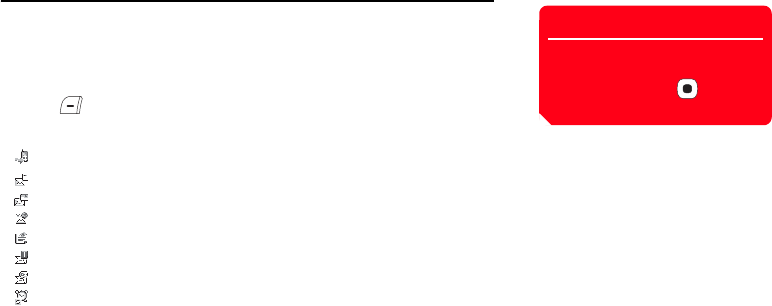
22
Basic Operations
Information Prompt
This feature notifies you of missed calls, unread messages or other unconfirmed
information. If you have unconfirmed information, the information prompt appears in
standby mode.
1. While the information prompt is displayed, select the item you want to confirm and
press (Select).
The information prompt contains the following items.
Missed Calls: Notifies of missed calls (page 43).
New SMS: Notifies of new SMS (page 147).
New MMS: Notifies of new MMS (page 138).
New WAP Push: Notifies of new WAP Push (page 148).
New Notifications: Notifies of new messages (page 139).
New Reports: Notifies of unread report messages (pages 142, 149).
Voicemail: Notifies of new messages at the Voicemail Centre (page 47).
Stop Snooze: Notifies of an activated alarm set to repeat (page 267).
Tip
If you still have unconfirmed
information after returning to standby
mode, press and hold to
redisplay the information prompt.
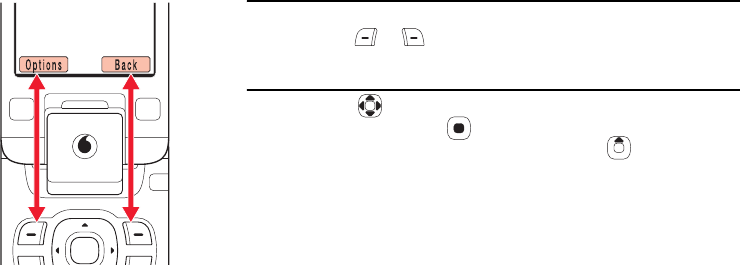
Basic Operations
23
Using Soft Keys
You can perform an operation displayed at the bottom of the main display by pressing
the corresponding or .
Using the Navigation Key
The navigation key allows you to perform various operations such as moving the
cursor up, down, left or right. With , you can display the Main menu, confirm the
selected item, perform the selected operation, etc. If you press in standby mode,
you can display the shortcut screen (page 231) and use shortcuts.
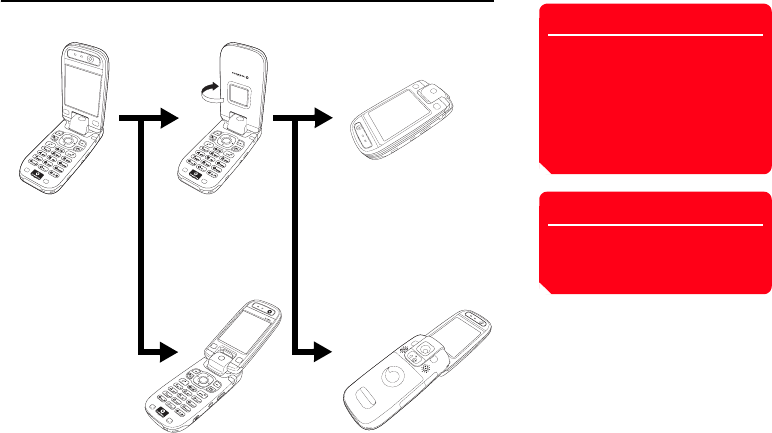
24
Basic Operations
Opening & Closing Your Phone
In addition to open style, you can use your phone in turnover style and self-portrait style. Note
• When rotating the display, do not
force the display to move in the
wrong direction. Doing so may
damage your phone.
• The procedures described in this
manual assume that your phone is
in the open style.
Tip
If you switch to turnover style during
a voice or video call, the outgoing
sound is muted.
Open your phone
until the display is
at an angle of 90
degrees to the
keyboard.
Rotate the display
180 degrees
clockwise.
Turnover Style
Convenient for taking
pictures and recording
videos at high resolutions.
Open Style
Open your phone
until it reaches the
stop position.
Self-portrait Style
Convenient for
taking pictures of
yourself.
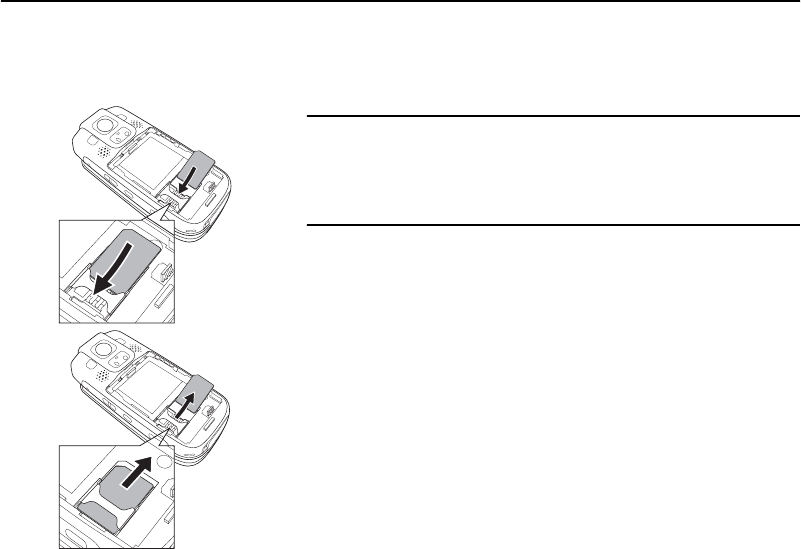
Basic Operations
25
SIM Card
Before using your phone, be sure to do the following.
◆Insert the SIM card in your phone.
◆Insert the battery pack in your phone (page 28).
About the SIM Card
The SIM card contains customer information such as your phone number. Only insert
the SIM card in a SIM card compatible phone. If the SIM card is not inserted, the phone
cannot be used.
Inserting & Removing the SIM Card
Before inserting or removing the SIM card, remove the battery pack. For details on
removing the battery pack, see page 28.
1. Open the battery cover and remove the battery pack.
2. With the IC surface facing downwards, insert the SIM card in the direction shown on
the left while keeping it straight.
To remove the SIM card, slide it out as shown on the left.

26
Basic Operations
Personal Identification Number (PIN) Code
The SIM card has two security codes: PIN code and PIN2 code. For details on the PIN/
PIN2 code, contact your service provider.
PIN Code
This is a four to eight digit security code to prevent another person from using your SIM
card without permission.
If the PIN code setting is set to On (page 246), your PIN code needs to be entered to use
your phone each time the power is turned on. You can change the initial number set at
the time of purchase (page 247).
PIN2 Code
This is a four to eight digit security code that needs to be entered for operations such as
modifying data saved to the SIM card. You can change the initial number set at the time
of purchase (page 247).
PUK (Personal Unblocking Key) Code
If the PIN code or PIN2 code is incorrectly entered three times in a row, the PIN/PIN2
lock is set. To cancel the PIN/PIN2 lock, enter the PUK code or PUK2 code. For details
on the PUK/PUK2 code, contact your service provider.

Basic Operations
27
Emergency Calls
You can still make calls to emergency services when the SIM card is not inserted.
However, there is no guarantee that a connection can be established in all countries and
areas because operation of your phone differs depending on the wireless network,
wireless signal and your phone’s setting status. Do not rely on just your mobile phone
when you need to make important calls such as calls to emergency services.
Calls may not be able to be made to emergency services depending on the network
services of some service providers. For details on services, contact the service provider.
1. While in a service area, confirm that your phone is turned on.
2. Dial the phone number for an emergency service.
3. Press .
Note
• Most GSM Networks support the
internationally recognized
emergency numbers of 112 and
911 (for the USA), consult your
service provider in the country you
are in for the correct number to dial
in an emergency.
• Calls cannot be made to
emergency services while data
communication is being performed
within a GSM area. End data
communication before making a
call.
• If the system mode is set to UMTS
Only or GSM Only, calls cannot be
made to emergency services if the
selected network is unavailable.
Change the system mode setting
(page 256) before making a call.
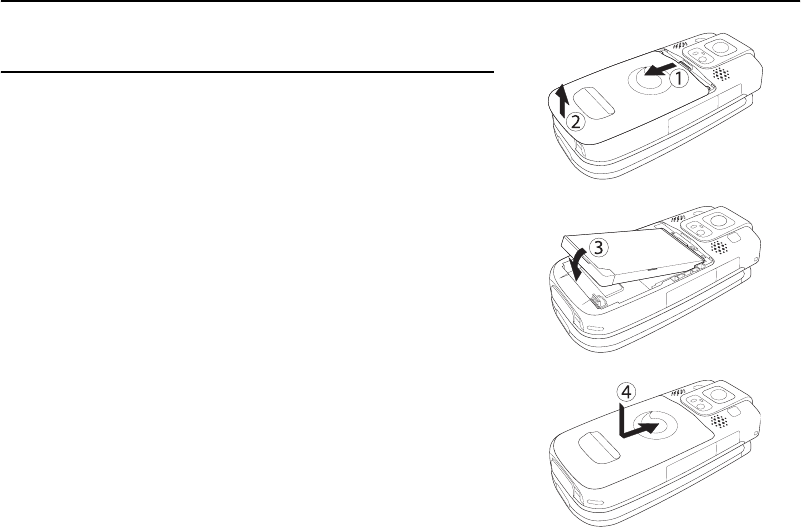
28
Basic Operations
Battery Pack
Before using your phone for the first time, charge the battery.
Inserting & Removing the Battery Pack
1. Press down on the battery cover at a point just below the second microphone and
slide it towards the bottom of your phone.
2. Lift off the battery cover.
3. Insert the battery pack while making sure the socket on the bottom of the battery
pack is aligned with the connector in the battery compartment.
To remove the battery pack, insert a fingernail beneath the side or bottom tab and
lift out the battery pack.
4. Place the battery cover on your phone and slide it until it clicks into place.

Basic Operations
29
Charging the Battery Pack
1. Turn off the power of your phone.
2. Open the external connector cover of your phone and insert the connector of the AC
adapter.
3. Insert the plug of the AC adapter into an AC outlet. The charging indicator lights up
and charging begins.
4. After the charging indicator goes out, remove the plug of the AC adapter from the
AC outlet. Remove the connector of the AC adapter from your phone while pressing
the release buttons on the sides of the connector.
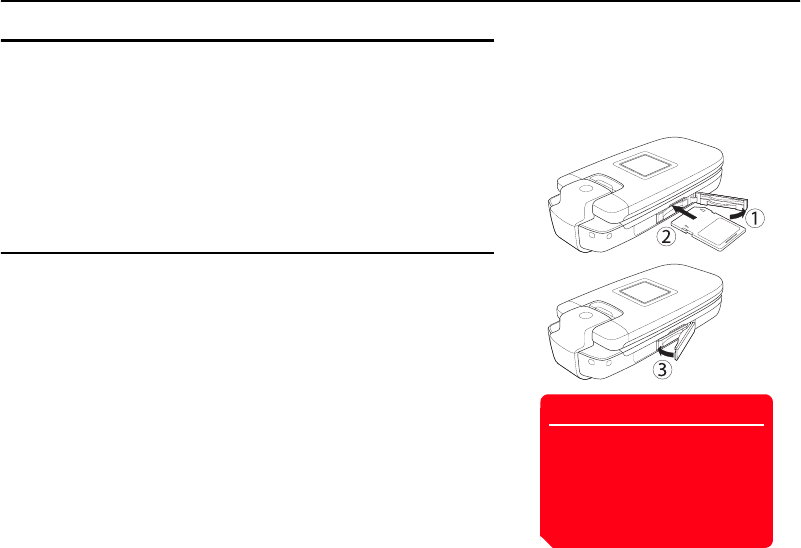
30
Basic Operations
Memory Card
About the Memory Card
A 32 MB memory card is supplied for use with your phone. You can save pictures taken
and videos recorded with the camera of your phone and various downloaded data to the
memory card. Make sure the power is turned off before inserting or removing the
memory card. Otherwise data may be lost.
◆This manual refers to an SD memory card as the “memory card.”
◆Your phone supports memory cards with a storage capacity of up to 512 MB.
There is no guarantee that all memory cards will work with your phone because
an operation check has not been performed for all memory cards.
Inserting & Removing the Memory Card
1. Open the memory card slot cover.
2. Gently push the memory card into the slot until it clicks into position.
To remove the memory card, gently press the memory card. When you let go, the
memory card will be ejected.
3. Close the memory card slot cover.
Note
• Do not use excessive force to open
the memory card slot cover. Doing
so may damage the cover.
• Take care that the memory card
does not fly out of your phone
during removal.

Basic Operations
31
Turning On/Off the Power
Turning On the Power
1. Press and hold .
The standby screen appears on the main display.
If the PIN code setting (page 246) is set to On, enter your PIN code after you press
and hold .
Turning Off the Power
1. In standby mode, press and hold .
The Power Off screen appears and the power is turned off.
Note
• A screen for setting the date and
time appears the first time you turn
on the power of your phone. Set
the date and time while referring to
“Date & Time Settings” (page 34).
• Touching the built-in antenna part
of your phone affects signal
strength. Avoid touching this part
of your phone during use.

32
Basic Operations
System Mode Setting
Your phone is UMTS (3G)/GSM dual mode compatible. Before using your phone, you
can set which system mode your phone uses. For details on setting the system mode,
see “Setting the System Mode” (page 256).

Basic Operations
33
Language Setting
You can change the language displayed on your phone. For details on setting the
language, see page 230.

34
Basic Operations
Date & Time Settings
Setting the Date & Time
You can set the date and time displayed in standby mode.
1. In standby mode, press , select Settings and press (Select).
2. Select Phone Settings and press (Select).
3. Select Date&Time and press (Select).
4. Select Set Date/Time and press (Select).
5. Enter the year (two digits), month, day and time and press (OK).
Tip
• You can enter a date from 2/1/
2000 to 30/12/2099. Enter the
time in accordance with the
24-hour system.
• You can switch the clock display
between the 12-hour and 24-hour
system (page 217).
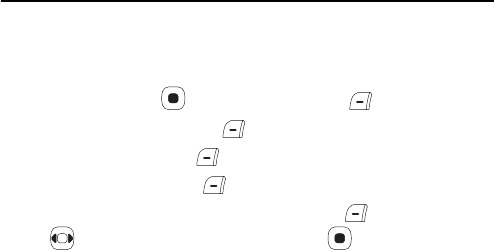
Basic Operations
35
World Clock Setting
In addition to the date and time displayed in standby mode, you can set the world clock.
For details on displaying the world clock, see page 275.
Setting the Home City/Alternate City
1. In standby mode, press , select Settings and press (Select).
2. Select Phone Settings and press (Select).
3. Select Date&Time and press (Select).
4. Select World Clock and press (Select).
5. Select Set Home City or Set Alternate City and press (Select).
6. Use to select the city you want to set and press .
A green circle indicates your home city on the map. A red circle indicates the
alternate city.
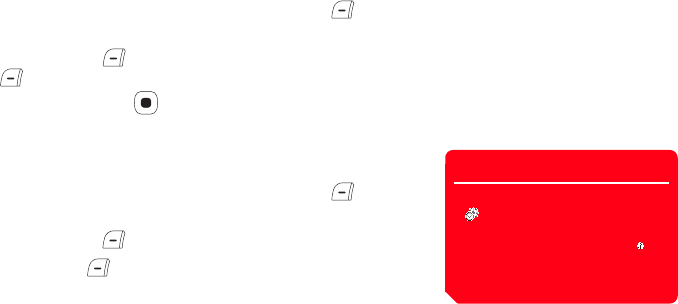
36
Basic Operations
Setting the GMT Offset
You can select a city by entering a GMT time difference.
1. After Step 5 of “Setting the Home City/Alternate City” (page 35), press
(Options).
2. Select GMT Offset and press (Select).
If you press (Options), you can select +/–.
3. Enter the time difference and press twice.
Setting the Daylight Saving Time (DST)
You can set the summer time.
1. After Step 5 of “Setting the Home City/Alternate City” (page 35), press
(Options).
2. Select DST On/Off and press (Select).
3. Select On or Off and press (Select).
Tip
If the DST setting is set to On, the
indicator appears on the display
when you set (page 35) or display
(page 275) the world clock. The
indicator or DST appears for the time
displayed in standby mode.
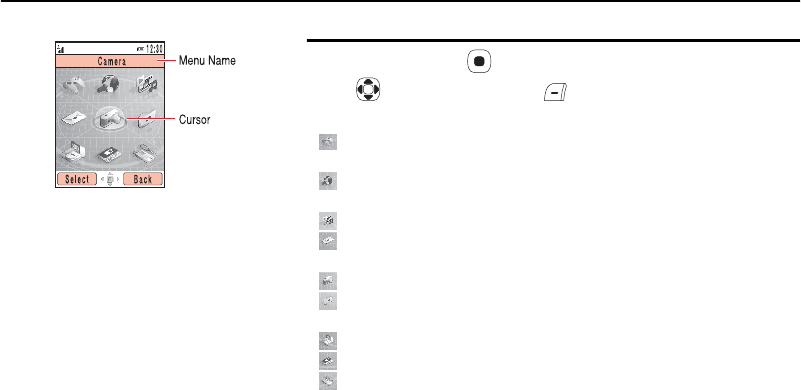
Basic Operations
37
Accessing Functions
Accessing a Function from the Main Menu
1. In standby mode, press to display the Main menu.
2. Use to select an icon and press (Select) to display the menu of the
function.
Games & More: Allows you to download and use games, screensavers and other
Java™ applications (page 181).
Vodafone live!: Allows you to access the Vodafone live! home page and
download pictures, melodies and applications (page 173).
Media Player: Allows you to play audio and video files (page 187).
Messaging: Allows you to create MMS/SMS/email messages. You can also
check received and sent MMS/SMS/email messages (page 131).
Camera: Allows you to take pictures and record videos (page 97).
My Items: Allows you to check the pictures you took, videos you recorded and
other data stored in data folders (page 195).
Organiser & Tools: Allows you to use preinstalled applications (page 261).
Contacts: Allows you to access and update the Contacts list (page 63).
Settings: Allows you to modify and confirm the settings of your phone (page
213).
Main Menu Screen

38
Basic Operations
Codes
Your security code, centre access code and call barring service code are required for
using your phone.
Security Code
Your security code is “0000” or the four-digit number you selected when you concluded
your contract. It is required to use functions and perform operations on your phone.
Centre Access Code
Your centre access code is the four-digit number you selected when you concluded your
contract. It is required to perform optional service operations from a fixed-line phone.
Call Barring Service Code
Your call barring service code is the four-digit number you selected when you concluded
your contract. It is required to set call barring (page 52).

Basic Operations
39
Making a Call
1. Confirm that the power is on.
Confirm that the signal level is sufficient.
2. In standby mode, enter a phone number.
If you enter the wrong number, each press of (Clear) deletes the digit on the
far right.
3. Press .
4. Press to end the call.
Making an International Call
1. In standby mode, press and hold .
+ appears.
2. Enter the country code, area code and other party's phone number.
If the other party’s phone number begins with 0, omit the first 0.
3. Press .
Sending Tones
You can send DTMF tones by pressing digit keys during a call.
To disable the sending of DTMF tones, press (Options) during a call and select
DTMF Off.
Tip
• You can perform the following
operations if you press
(Options) after entering a phone
number in standby mode.
•Voice Call: Makes a voice call.
•Video Call: Makes a video call
(page 85).
•Save to Contacts: Saves the
phone number to the Contacts
list (page 64).
•Send Message: Allows you to
create an SMS/MMS message
(pages 133, 144).
• You can also make a call from the
Contacts list (page 75) or the call
log (page 43).
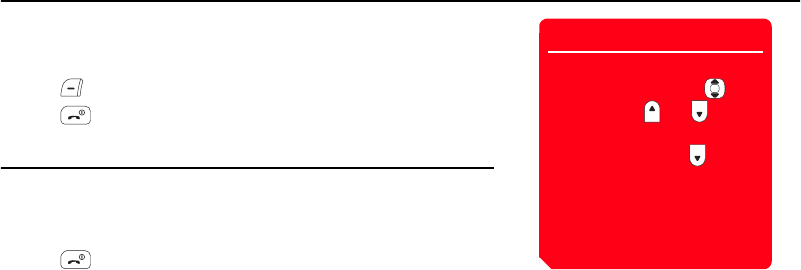
40
Basic Operations
Answering a Call
When a call is received, the ringtone plays and the external light flashes. If the phone
number is in the Contacts list (page 63), the name and phone number of the caller
appear on the display.
1. Press (Answer).
2. Press to end the call.
Rejecting a Call
You can manually reject an incoming call. To automatically reject calls from specific
phone numbers, add the phone numbers to the Rejection list (page 243).
1. A call is received.
2. Press .
Tip
•
To adjust the ringtone volume while a
call is being received, use
or
the side keys ( and ). To set
the ringtone volume to mute, press
and hold the side key ( ).
• If you miss a call, the information
prompt (page 22) appears.
• You can also use Open to Answer
(page 240) or Any Key Answer
(page 240) to answer a call.

Basic Operations
41
Operations during Calls
Options Available during a Call
You can perform the following operations if you press (Options) during a call.
◆Hold: Places the call on hold.
◆Mute My Voice: Mutes the outgoing sound.
◆Mute All: Mutes both the outgoing and incoming sound.
◆Contacts List: Allows you to reference the Contacts list (page 78).
◆Call Log: Allows you to access the call log (page 43).
◆Voice Record: Records the other party’s voice (page 42).
◆My Details: Displays the owner information (page 81).
◆DTMF Off/On: Allows you to disable or enable the sending of DTMF tones (page
39).
Tip
You can send and receive messages
and access the Web during a voice
call. This function is only available
while you are in an area with 3G
coverage (UMTS area). It is
unavailable during a video call even if
you are in an area with 3G coverage.
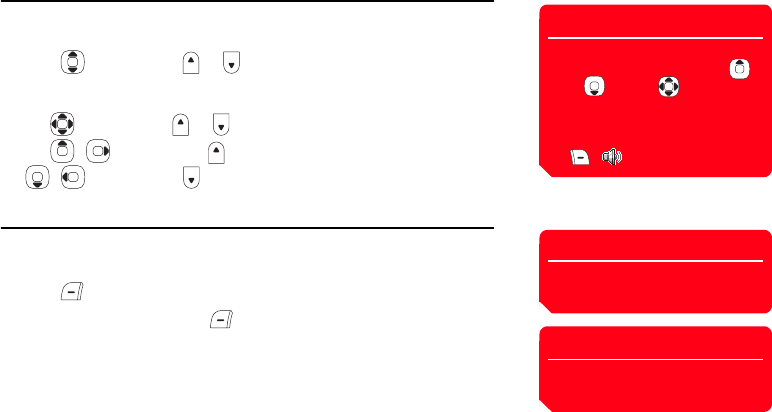
42
Basic Operations
Adjusting the Earpiece Volume during a Call
You can use the navigation key or side keys to adjust the earpiece volume to one of five
levels.
1. Press or the side key ( or ) during a call.
The current setting appears.
2. Use or the side key ( or ) to adjust the earpiece volume.
Use , or the side key ( ) to increase the earpiece volume and use
, or the side key ( ) to decrease the earpiece volume.
Recording during a Call
Voice Record allows you to record the other party’s voice during a call. The maximum
length of one recording during a call is 60 seconds.
1. Press (Options) during a call.
2. Select Voice Record and press (Select).
After the maximum length of recording time elapses or the call ends, recording
stops and the recording data is saved to the Recordings folder automatically.
Tip
• To adjust the earpiece volume in
standby mode, press and hold
or and use to adjust the
volume.
• To switch the sound to the speaker
to enable a handsfree call, press
( ) during a call.
Tip
For details on playing Voice Record
recordings, see page 272.
Note
Only the other party’s voice is
recorded. Your voice is not recorded.
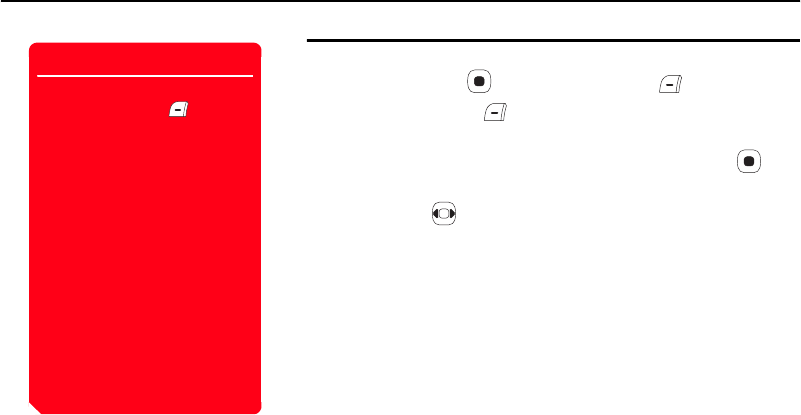
Basic Operations
43
Call Log
Viewing Dialled Numbers/Missed Calls/Received Calls
You can view the last 20 dialled numbers, missed calls and received calls.
1. In standby mode, press , select Contacts and press (Select).
2. Select Call Log and press (Select).
The Call Log screen appears.
3. Select Dialled Numbers, Missed Calls or Received Calls and press .
To switch from the Dialled Numbers screen to the Missed Calls screen or Received
Calls screen, use .
Tip
You can perform the following
operations if you press (Options)
while viewing dialled numbers,
missed calls or received calls.
•View: Displays the details.
•Voice Call: Makes a voice call.
•Video Call: Makes a video call
(page 85).
•Send Message: Allows you to
create an SMS/MMS message
(pages 133, 144).
•Save to Contacts: Saves the
phone number to the Contacts list
(page 64).
•To Rejection List: Saves the
phone number to the Rejection list
(page 243).
•Delete: Deletes the entry.
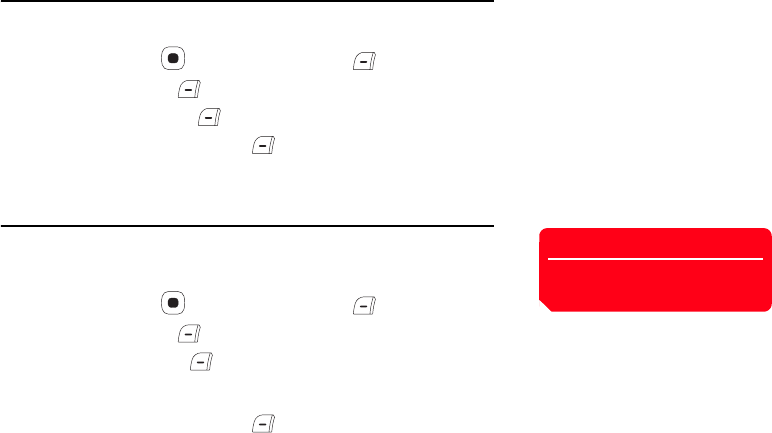
44
Basic Operations
Viewing Call Time
Viewing Last Call/All Calls
1. In standby mode, press , select Contacts and press (Select).
2. Select Call Log and press (Select).
3. Select Call Timers and press (Select).
4. Select Last Call or All Calls and press (Select).
To reset the call time, select Reset Timers.
Viewing Call Costs
You can view the cost for the last call or the total costs for all calls.
Viewing Last Call/All Calls
1. In standby mode, press , select Contacts and press (Select).
2. Select Call Log and press (Select).
3. Select Call Costs and press (Select).
The Call Costs list appears.
4. Select Last Call or All Calls and press (Select).
To reset the call costs, select Reset Costs.
Note
For accurate information on call
costs, contact your service provider.

Basic Operations
45
Viewing the Currency
You can view the currency for call costs.
1. From the Call Costs list (page 44), select Cost Unit and press (Select).
The currency and rate appear.
Setting Call Cost Display
You can set whether to display the call cost after a call ends.
1. From the Call Costs list (page 44), select Call Cost Display and press
(Select).
2. Select On or Off and press (Select).

46
Basic Operations
Viewing Data Transfer Volume
You can view the communication data volume for the last session or all sessions.
Viewing Last Data/All Data
1. In standby mode, press , select Contacts and press (Select).
2. Select Call Log and press (Select).
3. Select Data Counter and press (Select).
4. Select Last Data or All Data and press (Select).
To reset the data transfer volume, select Reset Data Counts.
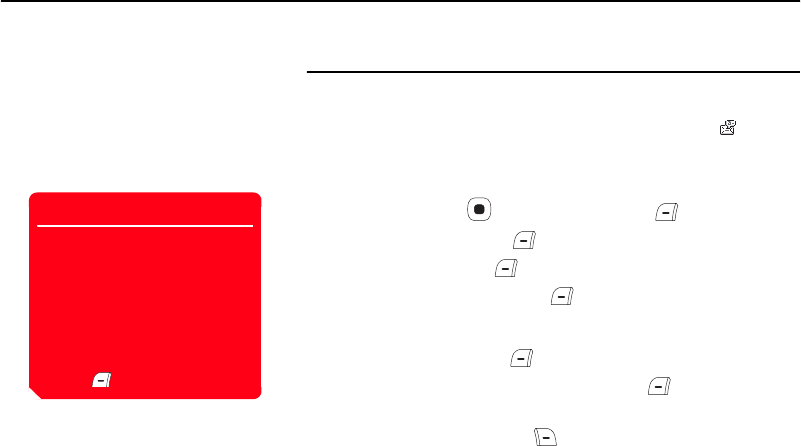
Basic Operations
47
Optional Services
For details on services, contact your service provider.
Voicemail Service
If you are unable to answer a call because, for instance, your phone is out of range or a
call is in progress, the call is diverted to the Voicemail Centre in accordance with the
Voicemail settings so as the caller can leave a message (voicemail). The indicator
appears on the display when you have a new message.
Starting the Voicemail Service
1. In standby mode, press , select Settings and press (Select).
2. Select Call Settings and press (Select).
3. Select Voicemail and press (Select).
4. Select Voicemail Settings and press (Select).
The Voicemail Settings screen appears.
5. Select Registration and press (Select).
6. Select the diverting condition you want to set and press (Request/Select).
◆All Calls: Diverts a call without your phone ringing.
◆When Busy: Allows you to press (Busy) to divert an incoming call.
◆
Not Reachable:
Diverts a call when your phone is out of range or the power is off.
◆No Answer: Diverts a call if you do not answer it within the set time.
◆All Conditional: Diverts a call that meets any of the other conditions except All
Calls.
After a network connection is established, the settings complete screen appears.
Tip
• To change the number for diverting
calls to the Voicemail Centre or the
number for accessing the
Voicemail Centre to listen to
voicemail, select Voicemail
Centre after Step 4.
• To confirm the status of settings,
select Status after Step 4 and
press (Request).
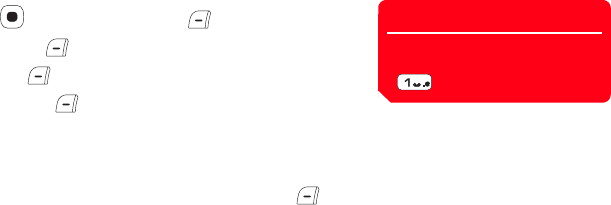
48
Basic Operations
Listening to Your Voicemail
1. In standby mode, press , select Settings and press (Select).
2. Select Call Settings and press (Select).
3. Select Voicemail and press (Select).
4. Select Call Voicemail and press (Call).
Follow the voice prompts of the Voicemail Centre.
Stopping the Voicemail Service
1. From the Voicemail Settings screen (page 47), select Deactivate and press
(Request).
After a network connection is established, the settings complete screen appears.
Tip
To listen to your voicemail from
standby mode, press and hold
.

Basic Operations
49
Call Divert Service
This service allows you to divert calls you are unable to answer to a preset phone
number.
Starting the Call Divert Service
1. In standby mode, press , select Settings and press (Select).
2. Select Call Settings and press (Select).
3. Select Call Diverting and press (Select).
4. Select the calls you want to divert and press (Select).
◆All Services: Allows you to set the Call Divert services for all incoming calls.
◆Voice Call: Allows you to set the Call Divert service for voice calls.
◆Video Call: Allows you to set the Call Divert service for video calls.
◆Fax: Allows you to set the Call Divert service for fax communication.
◆Data Call: Allows you to set the Call Divert service for data communication.
Tip
• To confirm the status of all call
divert services, select Status after
Step 3 and press (Request).
• To confirm the status of call divert
services individually, select Status
after Step 4 and press
(Request).

50
Basic Operations
5. Select the diverting condition you want to set and press (Select).
◆All Calls/All Faxes: Diverts all calls to the preset phone number without your
phone ringing.
◆When Busy: Allows you to divert an incoming call to the preset phone number by
pressing (Busy).
◆No Answer: Diverts a call if you do not answer it within the set time.
◆Not Reachable: Diverts a call when your phone is out of range or the power is
off.
◆All Conditional: Diverts a call that meets any of the other conditions except All
Calls.
6. Select an input method for the phone number and press (Select).
◆From Contacts: Allows you to select a phone number from the Contacts list
(page 74).
◆Set Number: Allows you to directly enter a phone number for the divert
destination.
◆From Call Log: Allows you to select a phone number from the call log (page 43).
7. Press (Request).
After a network connection is established, the settings complete screen appears.

Basic Operations
51
Stopping the Call Divert Service
1. After Step 3 of “Starting the Call Divert Service” (page 49), select Deactivate All
and press (Request).
After a network connection is established, the settings complete screen appears
and all call divert services are stopped.
To stop call divert services individually, select Deactivate after Step 4 of “Starting
the Call Divert Service” (page 49) and press (Request).
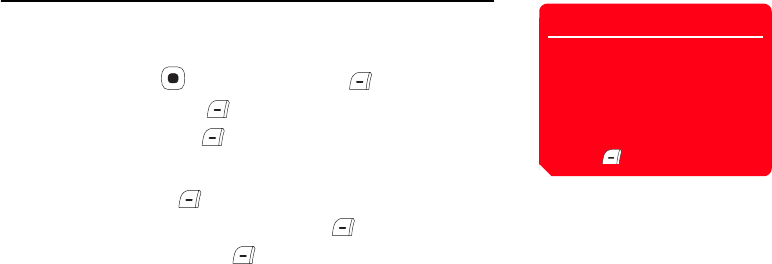
52
Basic Operations
Call Barring Service
This service stops all outgoing and incoming calls including international calls.
Starting the Call Barring Service
1. In standby mode, press , select Settings and press (Select).
2. Select Call Settings and press (Select).
3. Select Call Barring and press (Select).
The Call Barring settings screen appears.
4. Select Activate and press (Select).
5. Select Outgoing Calls or Incoming Calls and press (Select).
6. Select a barring condition and press (Request).
◆All Calls: Stops all outgoing and incoming calls.
◆International: Stops all outgoing and incoming international calls.
◆Except Local/Home: Stops all outgoing international calls except those to your
home network when you are abroad.
7. Enter your call barring service code (page 38).
After a network connection is established, the settings complete screen appears.
Tip
• You can still make calls to
emergency services (page 27)
when the call barring service is
enabled.
• To confirm the status of the setting,
select Status after Step 3 and
press (Request).

Basic Operations
53
Stopping the Call Barring Service
1. From the Call Barring settings screen (page 52), select Deactivate and press
(Select).
2. Select Outgoing Calls, Incoming Calls or All and press (Request).
3. Enter your call barring service code (page 38).
After a network connection is established, the settings complete screen appears.
Changing Your Call Barring Service Code
1. From the Call Barring settings screen (page 52), select Change Password and
press (Select).
2. Enter your current call barring service code (page 38).
3. Enter your new call barring service code and press (OK).
4. Re-enter your new call barring service code for confirmation and press (OK).
After a network connection is established, the settings complete screen appears.

54
Basic Operations
Call Waiting Service
When you receive a call during a call, you can place the current call on hold and answer
the incoming call. If the incoming call is from a caller whose phone number is in the
Contacts list (page 63), the caller’s name and phone number are displayed.
Starting the Call Waiting Service
1. In standby mode, press , select Settings and press (Select).
2. Select Call Settings and press (Select).
3. Select Call Waiting and press (Select).
The Call Waiting settings screen appears.
4. Select Activate and press (Request).
After a network connection is established, the settings complete screen appears.
Tip
To confirm the status of the setting,
select Status after Step 3.

Basic Operations
55
Using the Call Waiting Service
1. The call waiting tone is heard during a call. The name and phone number of the
caller appears on the display.
2. Press (Options).
3. Select Answer and press (Select) or .
The original caller is placed on hold and a connection is established with the second
caller. Both names appear on the display.
4. Press to switch between callers.
Stopping the Call Waiting Service
1. From the Call Waiting settings screen (page 54), select Deactivate and press
(Request).
After a network connection is established, the settings complete screen appears.

56
Basic Operations
Multiparty Call Service
This service allows you to call other parties during a call and then switch between the
parties or talk to multiple parties simultaneously. A call with up to six people including
yourself is possible. The names and/or phone numbers of all the parties appear on the
display during the call.
1. Enter the phone number of another party you want to call during a call and press
.
The original party is placed on hold and you can talk to the new party.
2. Press (Options) to perform one of the following operations.
◆Multiparty: Allows you to perform the following operations.
•Multiparty: Allows you to talk to all parties simultaneously.
•Private: Allows you to talk to the selected party only (private call).
•Hold: Places the selected party on hold.
•Hold All: Places all the parties on hold.
•End Call: Ends the call with the selected party.
•End All Calls: Ends the call with all the parties.
◆Swap: Allows you to change the party of a private call.
◆Mute My Voice: Mutes the outgoing sound.
◆Mute All: Mutes all the outgoing and incoming sound.
◆Contacts List: Allows you to reference the Contacts list (page 78).
Note
The options that are available vary
depending on the call status.
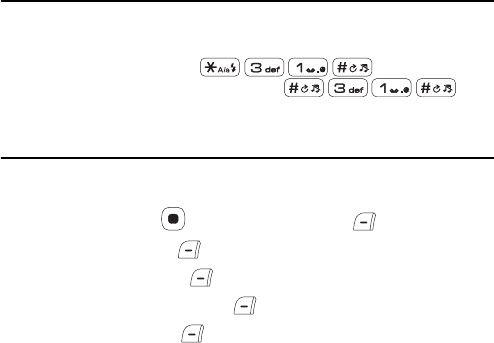
Basic Operations
57
◆Call Log: Allows you to access the call log (page 43).
◆Voice Record: Records the other party's voice (page 42).
◆My Details: Displays the owner information (page 81).
◆DTMF Off/On: Allows you to disable or enable the sending of DTMF tones (page
39).
Caller ID Service
This service allows you to set whether to notify the other party of your phone number
when you make a call.
1. Before the phone number, dial if you want to notify
the other party of your phone number and dial if you
do not want to notify the other party of your phone number.
Call Costs Service
This service allows you to set whether an estimate for the cost of a call is displayed on
the display when the call ends.
1. In standby mode, press , select Contacts and press (Select).
2. Select Call Log and press (Select).
3. Select Call Costs and press (Select).
4. Select Call Cost Display and press (Select).
5. Select On or Off and press (Select).
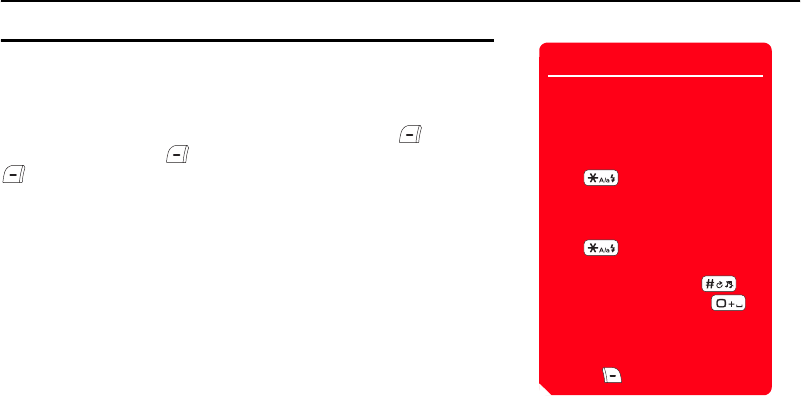
58
Basic Operations
Character Input
Character Input Modes
Your phone has four character input modes. Use these modes when saving new entries
to the Contacts list or creating text messages.
Switching Character Input Modes
To switch the character input mode in a character input screen, press (Options),
select Input Method, press (Select), select a character input mode and press
(Select). The selected character input mode is indicated at the top of the character
input screen.
◆T9 abc/ T9 Abc/ T9 ABC: Allows you to enter characters in T9 mode (page 59).
◆abc/Abc/ABC (Multi Tap mode): Allows you to directly enter letters of the
alphabet. Each press of a digit key switches the letter to the next letter assigned
to that key. Select abc for all lowercase characters, Abc for initial caps and ABC
for all uppercase characters.
◆Symbols: Symbol input mode.
◆Numeric: Numeric input mode.
Tip
• You can perform the following
operations in T9 mode or Multi Tap
mode.
• To switch between T9 mode and
Multi Tap mode, press and hold
.
• To switch between initial caps,
uppercase, lowercase and
numeric input mode, press
.
• To display the symbols list to
enter a symbol, press .
• To enter a space, press .
• To enter a number, press and
hold a digit key.
• To delete a character you entered,
press (Clear).
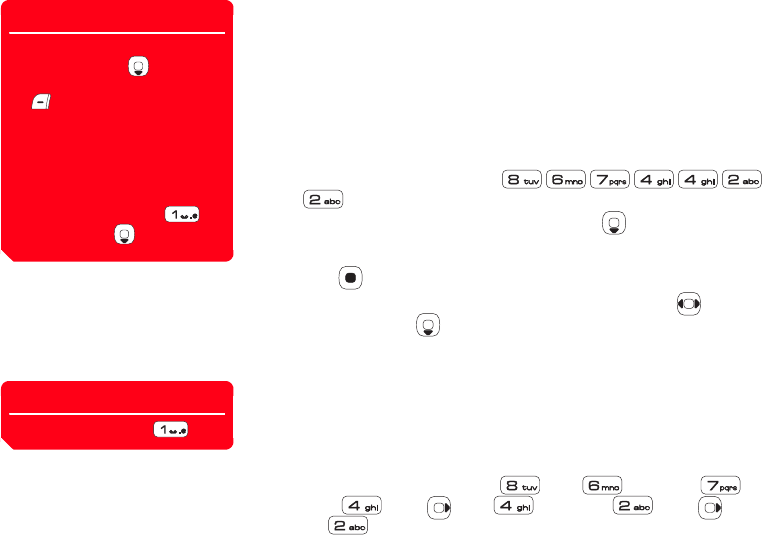
Basic Operations
59
Entering Characters in T9 Mode
In T9 mode, you only need to press once each of the digit keys to which the letters of
the alphabet you want to enter are assigned. During input, predictions of frequently
used words are displayed. Simply select a prediction to enter it. Compared to Multi Tap
mode, T9 mode is quicker and easier because fewer keystrokes are required to enter
characters.
1. In a character input screen, switch to T9 mode (page 58).
2. Enter characters.
Example: To enter “toshiba,” press
.
If the word you want to enter does not appear, press to display the next
prediction.
3. Press to confirm your selection.
If you want to reconvert a word after it has been confirmed, press , highlight
the word and press .
Entering Characters in Multi Tap Mode
In Multi Tap mode, you can enter a letter of the alphabet by pressing the digit key
assigned to the letter as many times as necessary to display the letter.
1. In a character input screen, switch to Multi Tap mode (page 58).
2. Enter characters.
Example: To enter “toshiba,” press once, three times, four
times, twice, once, three times, twice, once
and once.
Tip
• To display a list of conversion
predictions, press three times
in Step 2. Select a word and press
(Select) to confirm the word.
• If the word you want to enter does
not appear in the list of conversion
predictions, the word will appear
next time if you add it to the T9
dictionary (page 62).
• To enter a symbol, press
and then press .
Tip
To enter a symbol, press .
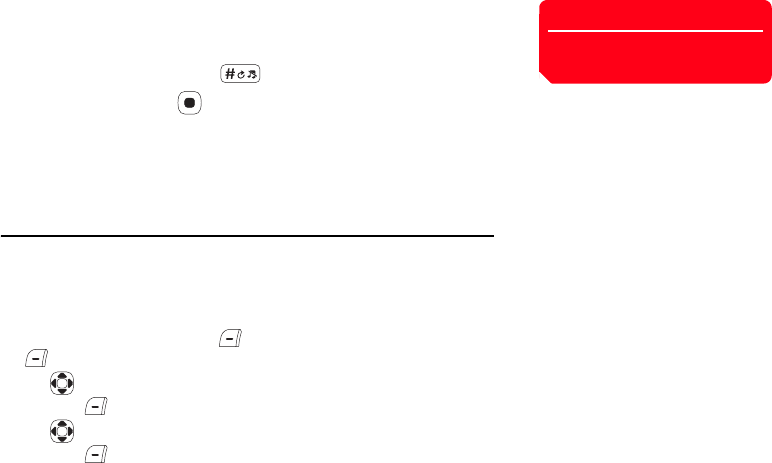
60
Basic Operations
Entering Symbols
1. In a character input screen, switch to Symbols mode (page 58).
A list of symbols appears.
To display the Emoticon list, press .
2. Select a symbol and press .
Using Numeric Mode
In Numeric mode, you can enter a number in a character input screen by simply
pressing the digit key to which the number is assigned.
Text Editing Functions
Copy/Cut
You can copy or cut a range of characters and store it in the clipboard. You can store up
to 20 data items (excluding pictures) in the clipboard.
1. In a character input screen, press (Options), select Copy or Cut and press
(Select).
2. Use to move the cursor to the first character of the range you want to specify
and press (Start).
3. Use to move the cursor to the last character of the range you want to specify
and press (End).
Note
The list of emoticons cannot be
displayed for some functions.

Basic Operations
61
Paste
In a character input screen, you can paste characters stored in the clipboard.
1. In a character input screen, use to move the cursor to the position you want to
paste the characters.
2. Press (Options), select Paste and press (Select).
3. Select the item you want to paste from the clipboard and press .
Undo/Redo
During text input, you can use this feature to redisplay deleted characters and delete
inserted characters, as well as redo operations.
1. In a character input screen, enter characters.
2. Press (Options), select Undo/Redo and press (Select).
Insert
You can select information in the notepad (page 274), Contacts list (page 63) or My
Details (page 81) and insert it during character input.
1. In a character input screen, use to move the cursor to the position you want to
insert an item.
2. Press (Options), select Insert and press (Select).
3. Select Notepad, Contact Details or My Details and press (Select).
4. Select the item you want to insert and press .
Note
Performing the Redo operation after
the Undo operation takes you back to
the state prior to performing the Undo
operation.
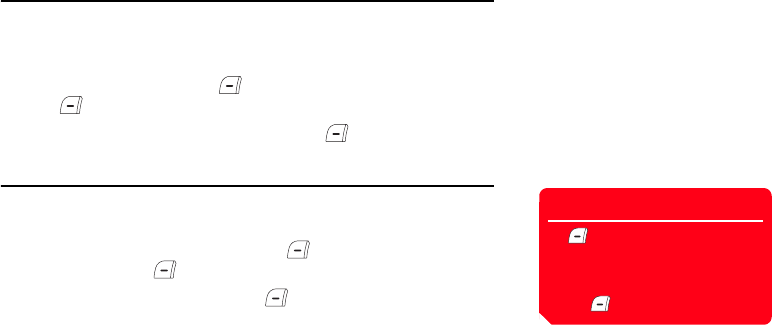
62
Basic Operations
Setting the Input Language
The language displayed in character input screens is the display language set for the
language setting (page 230). You can also change the input language temporarily
during character input.
1. In a character input screen, press (Options), select Input Language and
press (Select).
2. Select the input language you want to use and press (Select).
Adding a Word to the T9 Dictionary
If you add an item to the T9 dictionary, it will appear in the list of conversions when the
matching characters are entered on future occasions.
1. In a character input screen in T9 mode, press (Options), select Add to
Dictionary and press (Select).
2. Enter the word you want to add and press (OK).
When you enter a word, the mode switches automatically to Multi Tap.
Tip
If (Spell) appears for a word
during character input in T9 mode,
the word is not in the T9 dictionary.
To add the word to the T9 dictionary,
press (Spell).

Basic Operations
63
Contacts List
Use the Contacts list when making calls and sending messages. You can save up to
500 Contacts list entries to your phone. You can also save Contacts list entries to the
SIM card and memory card. The ability to store the maximum amount of entries will
depend on the size of entries and available space in the SIM card or memory card.
◆Contacts List: Displays the Contacts list.
◆Create Contact: Allows you to add a new entry to the Contacts list.
◆Call Log: Displays the Call Log screen (page 43).
◆Manage Category: Displays the Category list for organising entries by category.
◆Manage Group: Displays the Group list. Groups allow you to send the same
message simultaneously to multiple addresses.
◆Send My vCard: Converts the owner information to vCard format and sends it to
an external device.
◆Synchronise: Synchronises the Contacts list.
◆My Details: Displays the owner information and allows you to edit the
information.
◆Settings: Allows you to add an entry to the Speed Calling list, set the storage
place of the Contacts list and set the scroll speed for the Contacts list screen.
◆Memory Status: Displays the number of Contacts list entries in each of your
phone, SIM card and memory card.
Contacts Menu Screen
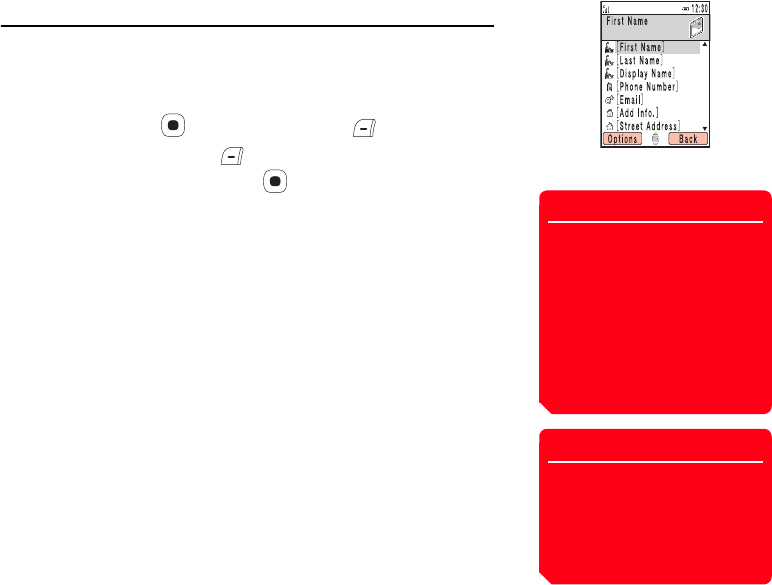
64
Basic Operations
Adding an Entry to the Contacts List
Adding an Entry from the Main Menu
Add new entries from the Create Contact screen. You can set just the required items
and modify items or set additional items later.
1. In standby mode, press , select Contacts and press (Select).
2. Select Create Contact and press (Select).
3. Select the item you want to set and press .
The input screen for the selected item appears.
◆First Name: Allows you to enter a first name.
◆Last Name: Allows you to enter a last name.
◆Display Name: Displays the first name and last name you entered automatically.
You can also edit the display name.
◆Phone Number: Allows you to enter up to three phone numbers. You can enter
up to 40 digits for each phone number.
◆Email: Allows you to enter up to three email addresses.
◆Add Info.: Allows you to enter additional address information.
◆Street Address: Allows you to enter a street address.
◆City: Allows you to enter a city name.
◆State: Allows you to enter a state name.
◆Country: Allows you to enter a country name.
◆Postcode: Allows you to enter a postcode.
◆Job Title: Allows you to enter a job title.
Create Contact Screen of the Phone’s Contacts List
Note
• The entry cannot be saved unless
information is entered for at least
one of First Name, Last Name,
Phone Number and Email.
• Only a name and a phone number
can be saved to the Contacts list of
the SIM card.
•Picture, Settings and Note
cannot be set for the Contacts list
of the memory card.
Tip
• You can preset the default storage
place for Contacts list entries. For
details, see “Setting the Default
Storage Place” (page 80).
• To clear an item you entered, select
Clear Field after Step 5.